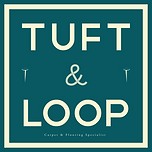How to Care for Engineered Wood Floors
- Tuft & Loop

- Aug 12, 2022
- 3 min read

Caring for your new engineered flooring is important to keep your floors looking great for years to come. Dirt, scratches, and other minor damage is an inevitable part of living with engineered hardwood floors. Caring for engineered wood is very similar to caring for hardwood floors, but if you’re new to wood flooring, you may feel a little lost about which p
roducts to use and how to avoid damage during everyday use. However, several tricks and tips can help you prevent potential damage—no matter how many pets, kids, or unexpected events your floors face.
Tips for protecting your floors
Floor mats near doorways are a great way to trap dirt, gravel, and other outdoor debris that might make its way inside. You can also get a floor rug or runner for your entryway, hallway, and other high-traffic areas. Avoid using mats with latex or rubber backing, as this can damage the finish on your floors.
Keep pets’ toenails trimmed and filed to avoid damaging your floors.
Do not place electronics directly on your engineered hardwood floors. The heat generated from electronics can damage your flooring over time.
Protect your engineered floors from UV damage by pulling curtains or blinds to shield your floors from direct sunlight, during peak sunlight times.
Place protective mats under chairs or tables with wheels to prevent scratching. Similarly, make sure all the furniture in your house has felt padding on the bottom of the legs. This will help you avoid damaging your floors whenever you move or rearrange furniture.
Wipe up any spills immediately, before the moisture has a chance to get into the wood and cause damage. While engineered hardwood flooring is less susceptible to water damage than solid hardwood flooring, prolonged exposure to liquids can result in damage.
Tips for Cleaning and Maintenance
Always sweep or dust first, to remove as much dirt and debris to avoid damaging your floors whilst mopping – a microfibre cloth or mop is perfect for this. You can also use a lightweight vacuum, but avoid using one with a rotating bristle bar, which can damage your floors. If your vacuum has a beater bar, remember to set it to a bare floor setting or use a floor-brush attachment instead.
Always keep your mop or cloth slightly damp rather than wet. While engineered hardwood flooring is more water-resistant than solid hardwood, you should still take care to not let moisture seep into the wood. Avoid creating standing water and instead use just enough that it will evaporate within a few minutes. After mopping, check your floors and dry off any remaining moisture.
Because excessive moisture can damage your floors, avoid using floor steamers, wet mops, or other cleaning methods that would allow water to seep between the planks and cause warping or other damage.
When cleaning your engineered hardwood flooring, wipe in the same direction as the wood grain for best results. This will help remove stubborn dirt from cracks and crevices in the flooring.
Purchase a cleaner made specifically for finished wood flooring. Apply your cleaning agent with a rag, mop, or sponge. Once you’ve applied your cleaning product, rinse your floors with water, then wipe them down with a clean, dry towel to eliminate any excess moisture.
Choose your engineered floor care products carefully. it’s important to avoid cleaning products with harsh chemicals, such as ammonia. You should also steer away from wax-based cleaners and oil soaps. In general, if a product is safe for use on hardwood floors, it is safe for your engineered flooring.
While it’s impossible to have a truly scratch-proof hardwood floor, if your hardwood floors suffer from scratches, there are ways to make the damage less noticeable—and less likely to cause further issues. Use a scratch concealer to eliminate the obvious white lines that come from scratches. This will also seal the area, preventing further scratching and keeping moisture from seeping into the wood.


Comments